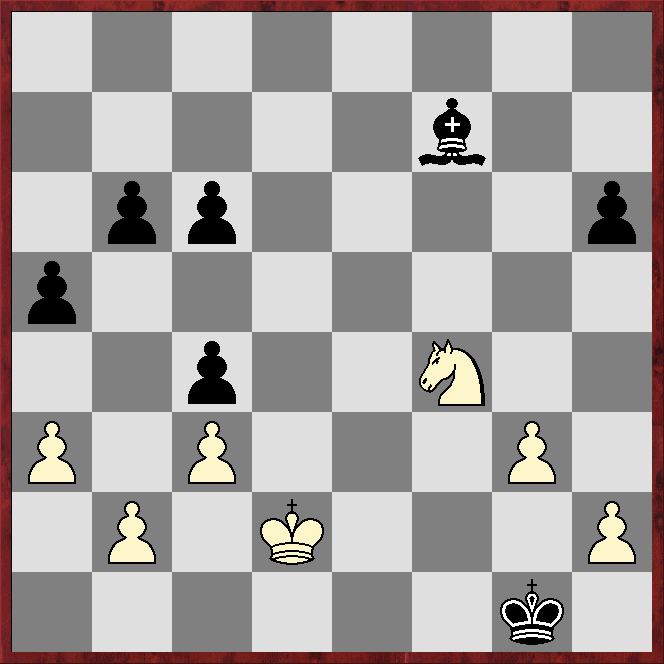But rather than entering the variation on move four, he delayed it in a way that creates new issues for both sides.
Nepomniachtchi (2795) - Ding (2788)
Spanish Exchange Delayed
1.e4 e5 2.Nf3 Nc6 3.Bb5 a6 4.Ba4 Nf6 5.0-0 Be7 6.Bxc6!?
José Capablanca experimented with this delayed capture in simuls, but it is probably fair to say it was not taken seriously until Max Euwe adopted it up in the 1940s, scoring wins against Lodewijk Prins, Haije Kramer, Efim Bogoljubow and Milan Vidmar.There is no doubt White has lost a tempo by first retreating the bishop and then capturing on c6. But Black cannot defend e5 with the f pawn, as often happens in Exchange lines, which means either the king's knight or king's bishop will have to move again, or the e5 pawn will need to be defended by the queen
6...dxc6
*****
*****
*****
*****
7.Re1!?
The mainline in ChessBase's 2023 Mega database runs 7.d3 Nd7 8.Nbd2!? 0-0 9.Nc4 f6 10.Nh4!? Nc5 11.Nf5!? Bxf5 12.exf5 with a slight edge for White, according to Stockfish15.1 and Komodo14.1.
7...Nd7 8.d4 exd4 9.Qxd4
 |
| White has achieved the classic Spanish Exchange pawn-structure of a sound 4-3 kingside pawn-majority versus Black's compromised 4-3 queenside majority |
*****
*****
*****
*****
9...0-0 10.Bf4 Nc5 11.Qe3!?
The Spanish Exchange has a dull reputation in some circles, but both players face tricky decisions. White is often happy to swop queens as it brings an ending nearer, but it is usually Black who makes such a swop, eg in the old mainline 1.e4 e5 2.Nf3 Nc6 3.Bb5 a6 4.Bxc6 dxc6 5.d4 exd4 6.Qxd4 Qxd4. The reason is that it is felt the white queen is too powerful to be left in the centre of the board.
11...Bg4!?
This may be a novelty. All seven games to reach the position in Mega23 saw 11...Ne6.
12.Nd4 Qd7 13.Nc3 Rad8 14.Nf5!?
The engines are not keen on this, preferring 14.h3.
14...Ne6
Black equalises with 14...Bxf5 15.exf5 Rfe8, according to the engines.
15.Nxe7+ Qxe7
 |
| White still has the superior pawn-structure, but Black no longer has the bishop-pair as compensation |
*****
*****
*****
*****
16.Bg3 Bh5!? 17.f3 f6 18.h3 h6 19.Kh2 Bf7 20.Rad1 b6 21.a3 a5 22.Ne2 Rxd1 23.Rxd1 Rd8!?
Allowing all rooks to come off brings an ending closer, but Black was mildly cramped, and Ding may have been angling for an ending of opposite-coloured bishops.
24.Rd3 c5 25.Qd2 c6?!
This leaves Black with two weak pawns to defend on the queenside (b6 and c6) instead of just one (c7).
26.Rxd8+ Nxd8 27.Qf4 b5 28.Qb8 Kh7 29.Bd6 Qd7
*****
*****
*****
*****
30.Ng3!?
Komodo14.1 prefers 30.Bxc5, after which 30...Qd2 31.Nd4 Ne6 32.Nxe6 Bxe6 is better for White, but difficult to win. Stockfish15.1 gives 30.Qc7 Qxc7 31.Bxc7 Nb7, again with advantage to White.
30...Ne6 31.f4!?
The engines reckon this is premature, preferring 31.c3.
31...h5
Black completely equalises with 31...Nd4, according to the engines.
32.c3 c4 33.h4 Qd8!? 34.Qb7
Exchanging queens gives White at least a slight edge, according to the engines, eg 34.Qxd8 Nxd8 35.f5!?, a space-gaining manoeuvre made famous by Emanuel Lasker in his St Petersburg 1914 win over Capablanca.
34...Be8 35.Nf5 Qd7 36.Qb8 Qd8 37.Qxd8 Nxd8
*****
*****
*****
*****
38.Nd4 Nb7 39.e5 Kg8 40.Kg3 Bd7 41.Bc7 Nc5!? 42.Bxa5 Kf7 43.Bb4 Nd3 44.e6+!? Bxe6 45.Nxc6 Bd7 46.Nd4 Nxb2 47.Kf3 Nd5 48.g3 Nc1 49.Ke3 ½–½
CONCLUSION: Exchange lines of the Spanish remain a viable option. White scores 55% with 6.Bxc6!? in Mega23, two percentage points more than with 4.Bxc6. However, after 4.Bxc6 dxc6 White's score creeps up to 54% with 5.0-0. Then again, 5.a3!? scores 65%!












































